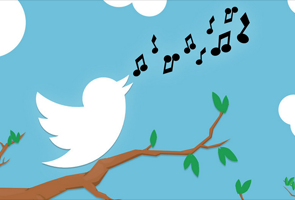Twitter is simultaneously the easiest-to-use and most inefficiently utilized of all the social networks when it comes to marketing. While Twitter’s purpose has gone through a couple paradigm shifts since its inception, its simplicity of structure and its insistence on succinct, get-to-the-point communications can really work in your favor… if you use it right. The problem is, many marketers just plain don’t.
Tweets are great in that they get the job done before there is time to lose the attention of the reader, but for those not adept in the “subtle science and exact art” of Tweeting (to quote one of literature’s most misunderstood antagonists), this can also be their biggest drawback. Here are five things most marketers do wrong in their tweets along with some advice on how to improve them.
1. Not Making Tweets Retweetable
What makes a tweet “retweetable” then? Personally, I think it boils down to several things.
First, it means limiting your character count to about 100. By “about 100,” I mean don’t obsess over it, but hit it as close to the mark as possible. 96 is fine; so is 104. So how come you can’t use the entire 144? If you want your tweets to get shared, you need to think about your readers and how they will engage with your tweets. You want to leave room for them to leave an @mention for their friends or add a #hashtag to begin an even bigger conversation.
Next, it means making sure that your tweet lines up exactly with your content. If someone clicks a link in your tweet and winds up on a page with content he or she doesn’t expect, why would he or she turn around and retweet your stuff? Keep it real and keep it relevant.
Finally, it means making it clear what you want your audience to do with your tweet. That means having some kind of call to action, and those can have different purposes. You can come right out and say to retweet the message (which isn’t terribly effective), or you can approach it from a more subtle angle and suggest that the information in the tweet has value to people who share the reader’s interests. For example:
Is your child resisting potty training? You and other parents need this information: http://bit.ly/xxxxxxx
See what I did there? I didn’t tell the reader to retweet, but I did suggest that the information would be helpful to other parents. A more subtle approach is quite often more effective than shamelessly soliciting retweets.
To sum it up, every truly retweetable tweet has one or more of the following elements:
• An external link to a relevant piece of content, whether it’s a product, an article, or something else.
• An attention-getting image
• A call to action
• Enough characters to #hashtag or send @mentions to friends
2. Going for the Hard Sell
“Salesy” tweets don’t get retweeted. No one wants to share around a commercial. They will, however, share a tweet that they believe provides a solution to a nagging problem. Instead of going straight for the “buy my product” message, take a side approach like this:
Wouldn’t it be nice if your non-stick pans actually stayed non-stick? Check this out: http://bit.ly/xxxxxxx
Touching a nerve on a common problem like that will really help boost retweets, particularly if the link goes to a great product that is reasonably priced for the quality.
3. Directing Too Much Attention to the Product or Brand
Your tweets should almost always be about the reader, not your product or brand. Notice how the same message comes across from two different angles:
Get our new 3X strong retractable hose today and take 10% off at checkout here: http://bit.ly/xxxxxxx.
Your brand-new 3X strength retractable hose is here, and you can get it today for 10% off: http://bit.ly/xxxxxxx.
People don’t want to read about a hose, but they love reading about themselves. Use the words “you” and “your” regularly in your tweets and see how many more units you sell.
4. Making Too Many Pleas for Retweets
I touched on this a little bit earlier. Sometimes it’s appropriate to ask for a retweet, but it’s rarely effective unless you approach it from the proper angle. Used sparingly, an approach like this can help boost engagement and retweets.
Want to win a $100 gift card? Retweet this link about our weekend deals to enter: http://bit.ly/xxxxx
The trick here is providing a give-to-get incentive. People love contests, and they love free stuff. What they don’t like is being constantly bombarded with pleas for them to give you free advertising. No one shares tweets “just because,” and they certainly won’t do it if there’s nothing in it for them.
5. Tweeting the Same Message Every Day
Don’t think you can keep pelting people with the same message day after day just coming up with different words. Some companies do this several times a day, and it’s a recipe for disaster.
When you have nothing new to say, people always pick up on it, and they either ignore you or unfollow you once they realize you’re just repeating yourself. Need help keeping things fresh? That’s why custom writing services exist. A good copywriter can come up with plenty of things to say either about your brand, related to your brand, or within the realm of what your followers like in general.
